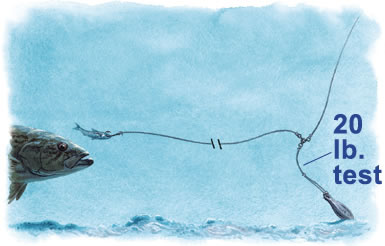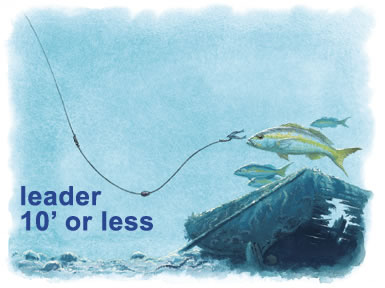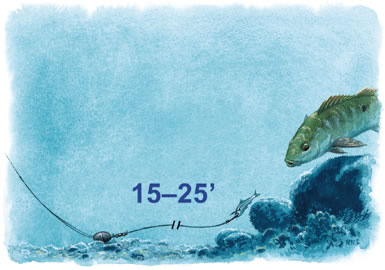How to build three proven rigs for taking grouper, snapper and other bottom species.
Catching big bottom fish is an art as much as it is a science. Consistent success demands precise anchoring or drifting tactics, specialized rigs, a strong back and plenty of elbow grease, not to mention a little bit of luck. Should all of these elements fall into place, you'll find yourself muscling big fish out of the depths and into your cooler.
As simple as they might appear, bottom rigs have a major influence on success, or lack thereof. A lot of thought and fine-tuning should go into making these rigs, based on the fish you're pursuing, how finicky they are, and the type the structure you're fishing. Stealth and strength remain the key elements.
Fluorocarbon provides a major advantage. For many fishermen, the main selling point of fluorocarbon is that the material is simply less visible than traditional nylon monofilament. Fluorocarbon is also much stiffer and more abrasion resistant than nylon mono of the same breaking strength. Therefore, in murky water, where leader visibility isn't a concern, fluorocarbon still offers an advantage that justifies its expense.
When using heavy tackle, avoid swivels and hooks that aren't strong enough for the task. Over the years I have caught several large grouper with old hooks and leaders dangling from their mouths. I've seen leaders with broken barrel swivels, leaders that have frayed apart, and small hooks and light leaders that simply had no chance of beating a big bottom fish. If you're hunting monsters, make sure your entire terminal system can handle the strain.
As for swivels, I use a barrel design that's rated for a minimum of 130-pound test or, more commonly, No. 4 SPRO Power Swivels rated for 230-pound test. I like to use barrel swivels that far exceed the strength of my terminal system, for two main reasons: I don't want a failure, and I want a swivel that can't jam inside my in-line egg sinker. If the swivel eye will fit inside the egg sinker, I separate the two with a smaller egg sinker, which acts as a spacer.
I also use the smallest, strongest hooks that will get the job done, especially when fishing for snapper. Again, with 30- to 50-pound-class tackle, you don't want to risk straightening the hook. For groupers and amberjack, I'll use a large, double-strength, short-shank hook in a size ranging from 8/0 to 11/0, one with a relatively wide gap if I'm dropping big live baits. Keep in mind that I am often fishing with 50- and 80-pound tackle with nearly locked-down drags, so the hook has to be very strong.
Although there are numerous variations when it comes to bottom rigs, outlined on the following pages are three highly effective versions that will fool more big snappers, groupers, amberjack and cobia around reefs, wrecks and other structure. Leader strength, swivel and hook size can be adjusted to match the size of the fish you're pursuing, as well as the tackle you're using.
|
|
|




